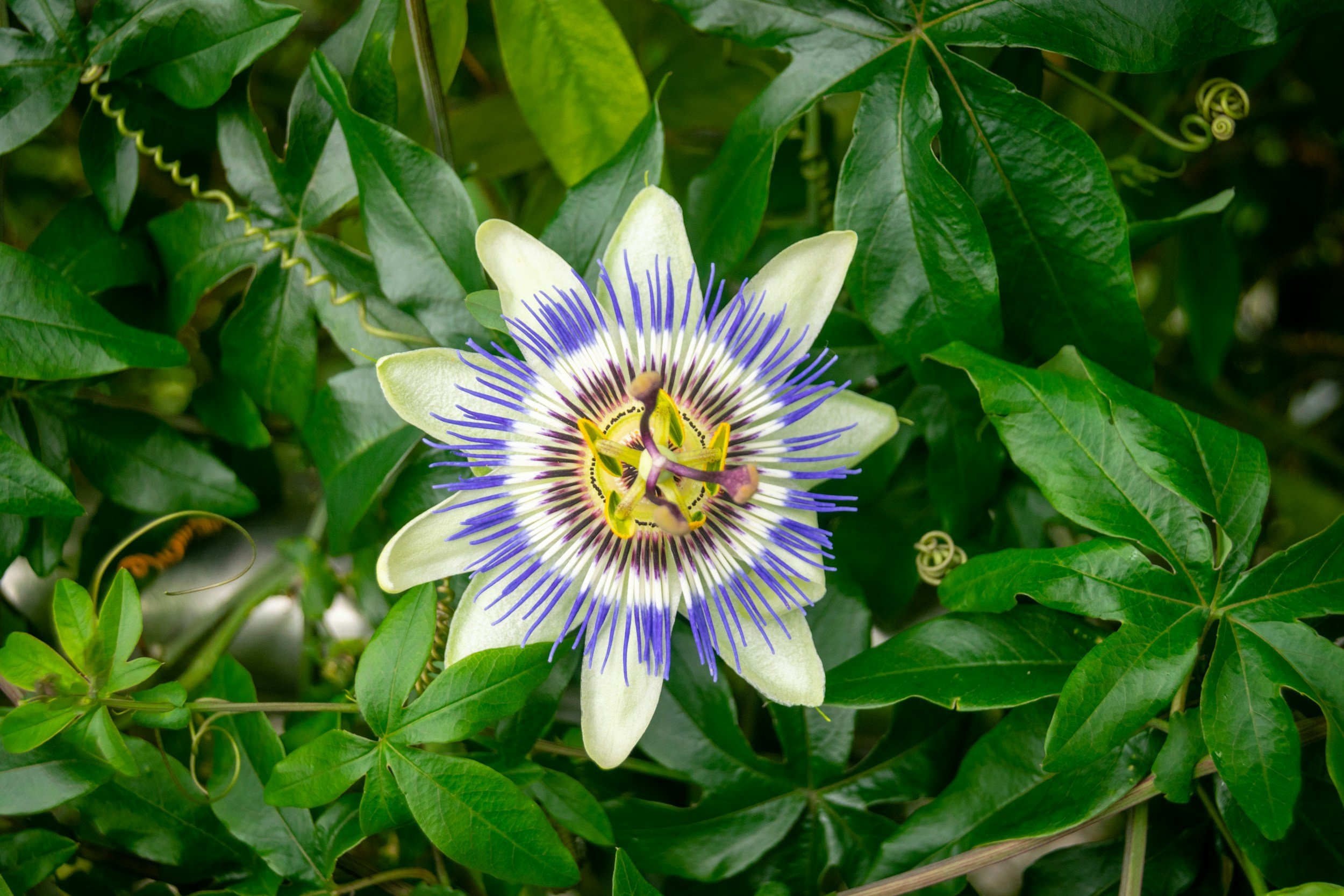
Passionflower
Passionflower
(Passiflora incarnata)
Plant family
Passifloraceae.
Other significant names
Purple passionflower
Maypop
Passionfruit.
Parts used
Flowering herb.
Typical forms of prescription
Infusions
Tinctures
Passion Flower (Passiflora incarnata) – Clinical Snapshot
Primary Actions
Nervine
Sedative
Antispasmodic
Anodyne
Hypotensive
Mild analgesic
Primary Indications
Insomnia
Anxiety
Anxiety-induced indigestion
Menopausal insomnia & anxiety
Hypertension
Shingles pain
⚠️Cautions / Safety⚠️
Caution in pregnancy and lactation
Caution in depression
Passiflora incarnata
Phytochemistry and Pharmacology
Flavonoids
Includes: Vitexin, isovitexin, orientin, apigenin
Action: Anxiolytic, sedative, antispasmodic, antioxidant
Use: These are key constituents in passionflower’s nervine action, particularly vitexin and isovitexin, which help calm the nervous system, reduce anxiety, and promote restful sleep. They modulate GABA activity, making passionflower useful for restlessness, racing thoughts, and nervous tension.
Alkaloids
Includes: Harman, harmine (in trace amounts)
Action: Nervine, mood-stabilising, mild MAO inhibition
Use: These indole alkaloids are present in small amounts and may contribute to passionflower’s tranquilising and antidepressant effects. They are part of the herb’s traditional use for insomnia with anxiety, irritability, and emotional hypersensitivity.
Glycosides
Includes: Cyanogenic glycosides (trace), flavonoid glycosides
Action: Sedative, hypotensive
Use: Flavonoid glycosides support the calming and vascular-relaxing actions of the plant, making it useful in stress-related hypertension, palpitations, and tension headaches. The cyanogenic glycosides are minimal and not considered harmful at traditional doses.
Phenolic Acids
Includes: Chlorogenic acid, caffeic acid
Action: Antioxidant, anti-inflammatory
Use: These add to passionflower’s ability to soothe inflamed tissues, reduce oxidative stress, and gently support immune health, reinforcing its value in chronic stress conditions.
Chrysin (a notable flavonoid)
Action: Anxiolytic, GABA-enhancing, anti-inflammatory
Use: Chrysin is often studied for its effects on anxiety and GABA modulation, making it a key component in passionflower’s ability to calm the mind, especially in racing or looping thoughts at night.
Traditional use
Native American medicine used by various tribes (like the Cherokee and Houma) for sedative and pain-relieving purposes. Made teas or poultices from the leaves, stems, or roots. Treat ailments such as insomnia, anxiety, seizures and wounds and bruises. The fruit (maypop) was eaten fresh or made into jams and beverages. It's rich in nutrients and is still consumed today in some areas.
Clinical discussion
Sedative actions of the indole alkaloids make Passiflora a key herb for treating sleep-onset or maintenance insomnia with anxiety, palpitations and digestive disorders. It is not so sedative that it causes grogginess. It has also been used for menopausal symptoms of anxiety.
Mild analgesic action makes it useful for shingles pain, neuralgia and dysmenorrhea.
Cultivation/harvesting
Passiflora incarnata is a perennial climbing vine native to the south-eastern United States, best known for its striking, intricate flowers and calming medicinal properties. It prefers a sunny, sheltered position and thrives in well-drained, fertile soil. While hardy to around –10 °C, it benefits from protection in colder UK climates and may die back over winter, regrowing in spring from its roots.
Use care when growing or harvesting passionflower for medicine. Many passionflower species are cultivated ornamentally in the UK, but only Passiflora incarnata is considered medicinally active and safe for internal use. Other species (e.g. P. caerulea) are not interchangeable.
Propagation:
Start from seed in early spring (germination can be slow) or propagate more reliably from softwood cuttings or root division. It can also be grown in large containers with support structures for climbing.Growth:
Vines can reach up to 5–10 metres in length in ideal conditions. Provide a trellis or fence for support. Water regularly during the growing season and mulch to retain moisture.Harvesting:
Harvest the aerial parts, including leaves, flowers, and young stems—at peak bloom in late summer, when the plant is most aromatic and vibrant. Dry gently in the shade with good airflow to preserve colour and volatile constituents.Storage:
Once fully dried, store in airtight containers away from light and moisture. Use within one year for maximum potency.
Key Botanical Features of Passiflora incarnata (Passionflower / Maypop)
Passiflora incarnata, commonly known as passionflower, maypop, or wild passion vine, is a perennial climbing vine in the Passifloraceae family. It's known for its unique, showy flowers, lobed leaves, and edible fruit, and is traditionally used for anxiety, sleep, and nervous conditions.
Growth Habit
Type: Perennial, climbing or trailing vine.
Size: Can grow 3–10 meters (10–30 feet) long with support.
Stem: Slender, green to purplish, and tendrilled, enabling it to climb structures or other plants.
Leaves
Type: Alternate, palmately 3-lobed (sometimes 5-lobed).
Shape: Deeply lobed, resembling a trident or maple leaf.
Size: 6–15 cm (2.5–6 inches) long.
Margins: Serrated or smooth.
Colour: Dark green on the upper surface, lighter underneath.
Special Feature: Nectar glands are present at the base of the leaf and petiole, attracting ants.
Flowers
Type: Large, exotic-looking, and fragrant.
Size: 5–7.5 cm (2–3 inches) across.
Colour: White to pale purple petals, with a corona of purple and white filaments.
Structure: Intricately arranged with 5 stamens, 3 stigmas, and a prominent central floral column.
Flowering Period: Late spring through early autumn (May–September).
Pollination: By bees, butterflies, and other insects.
Fruits & Seeds
Fruit Type: Oval, fleshy berry known as a maypop.
Size: About 5–7 cm (2–3 inches) long.
Colour: Green when unripe, turning yellowish as it matures.
Inside: Contains numerous black seeds embedded in juicy, aromatic pulp.
Edible: Yes — mildly sweet and tangy flavour.
Roots
Type: Fibrous and spreading, capable of forming root suckers.
Note: Rhizomatous roots allow the plant to spread and regenerate easily.
Habitat & Growth Conditions
Climate: Prefers warm temperate to subtropical climates.
Soil: Thrives in well-drained, sandy or loamy soils.
Sunlight: Requires full sun to partial shade.
Water Requirements: Moderate; tolerates occasional drought.
Distribution: Native to south-eastern North America; naturalised in many regions.
Sustainability/conservation
Widely cultivated in the UK.
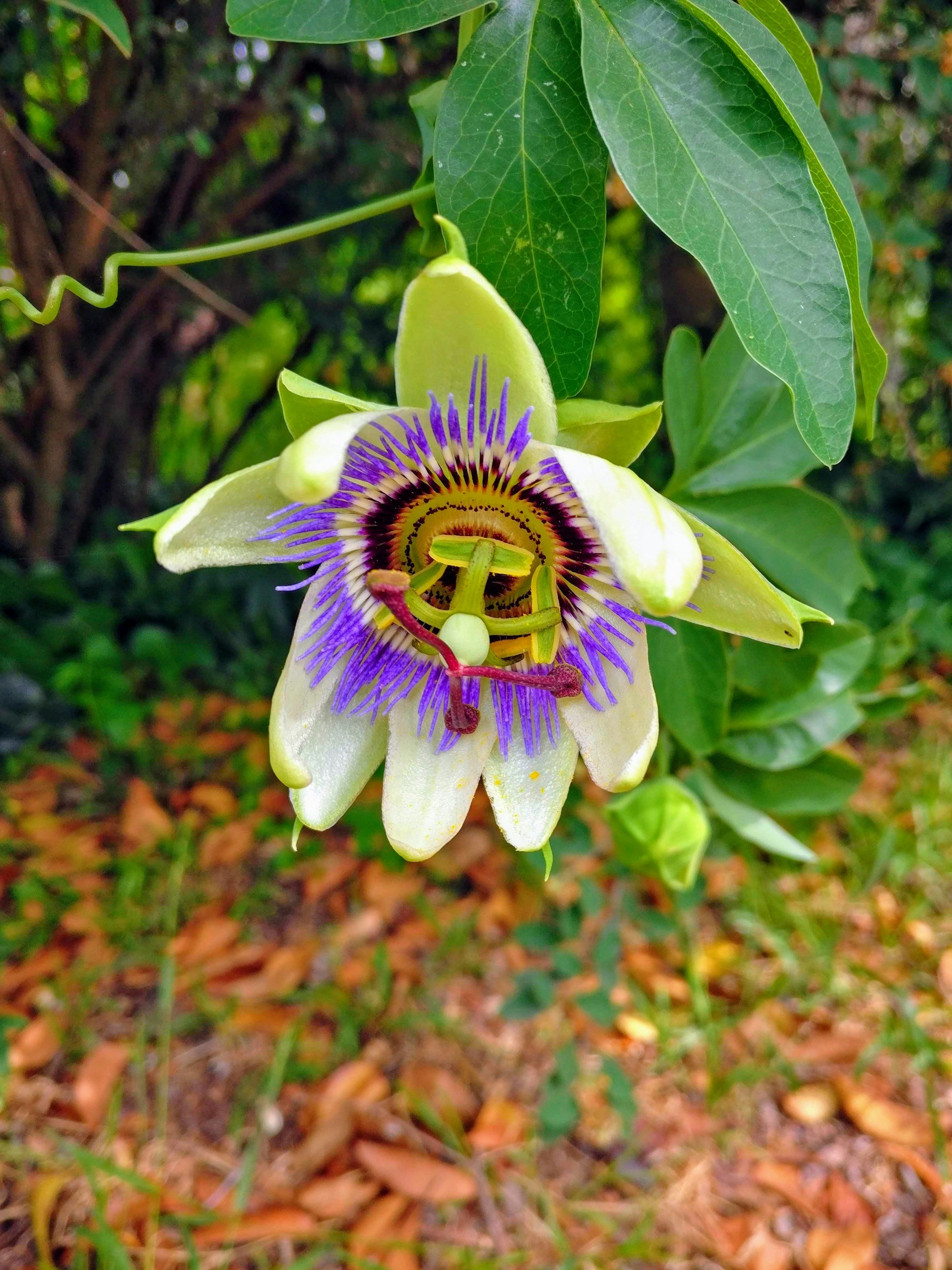
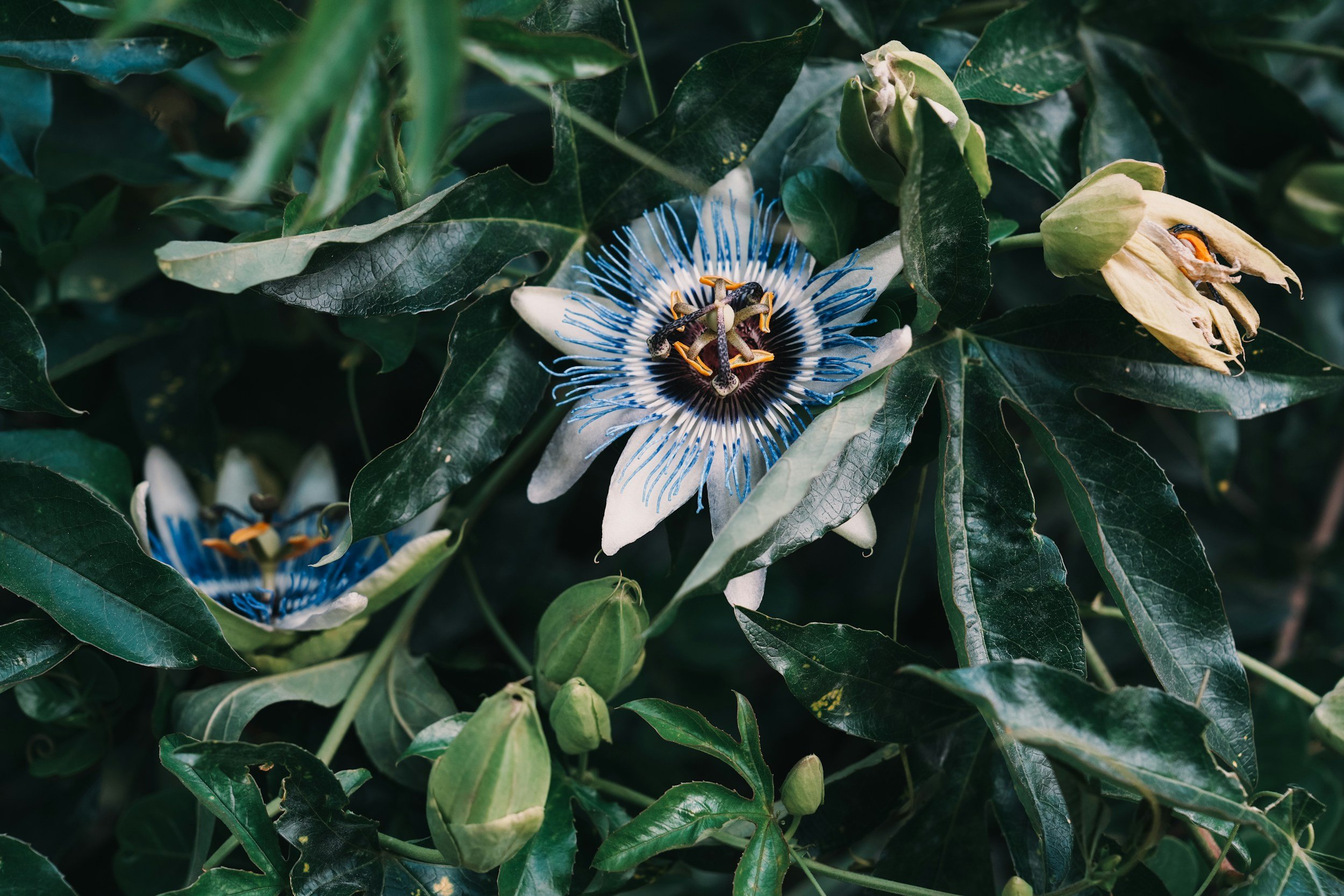
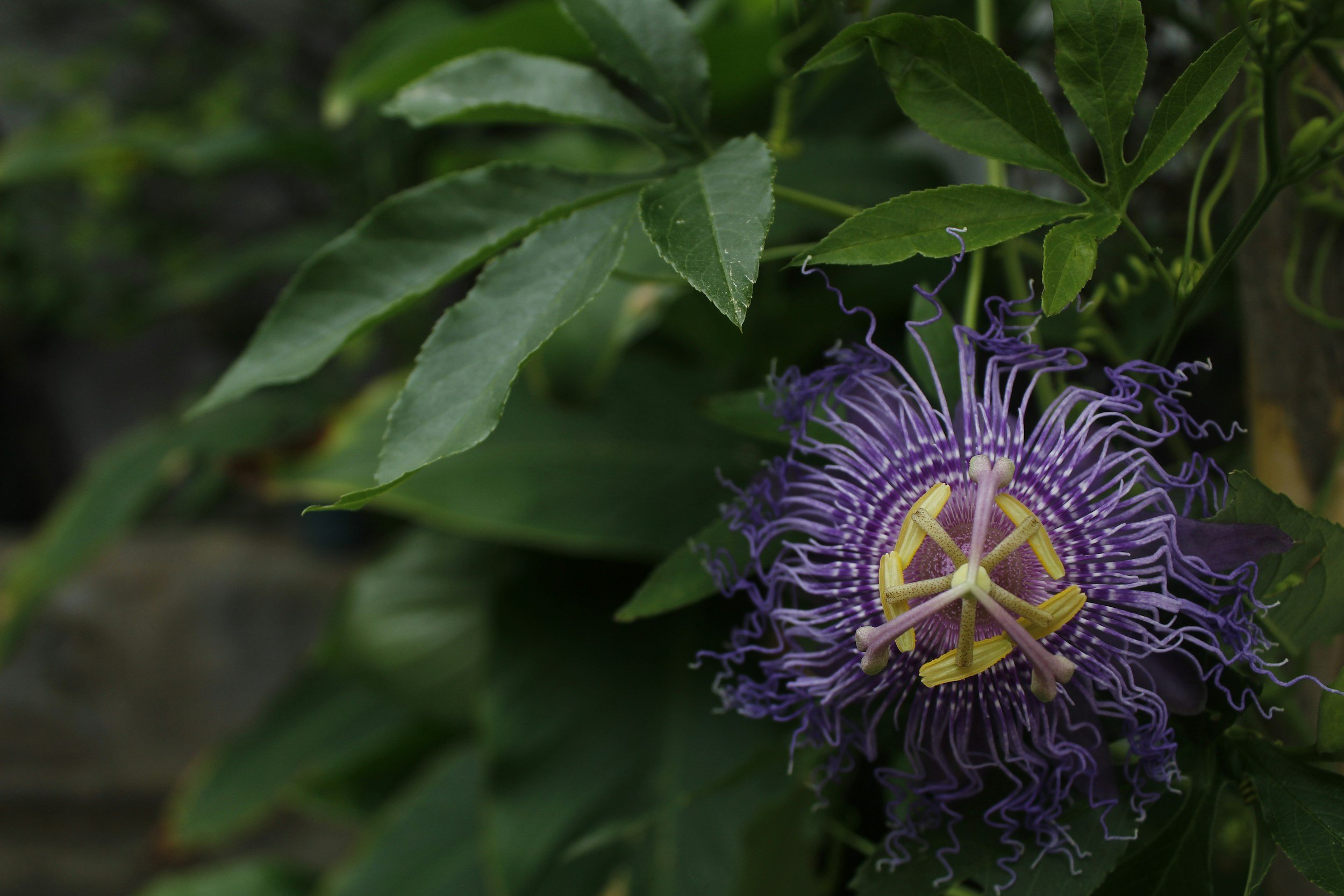
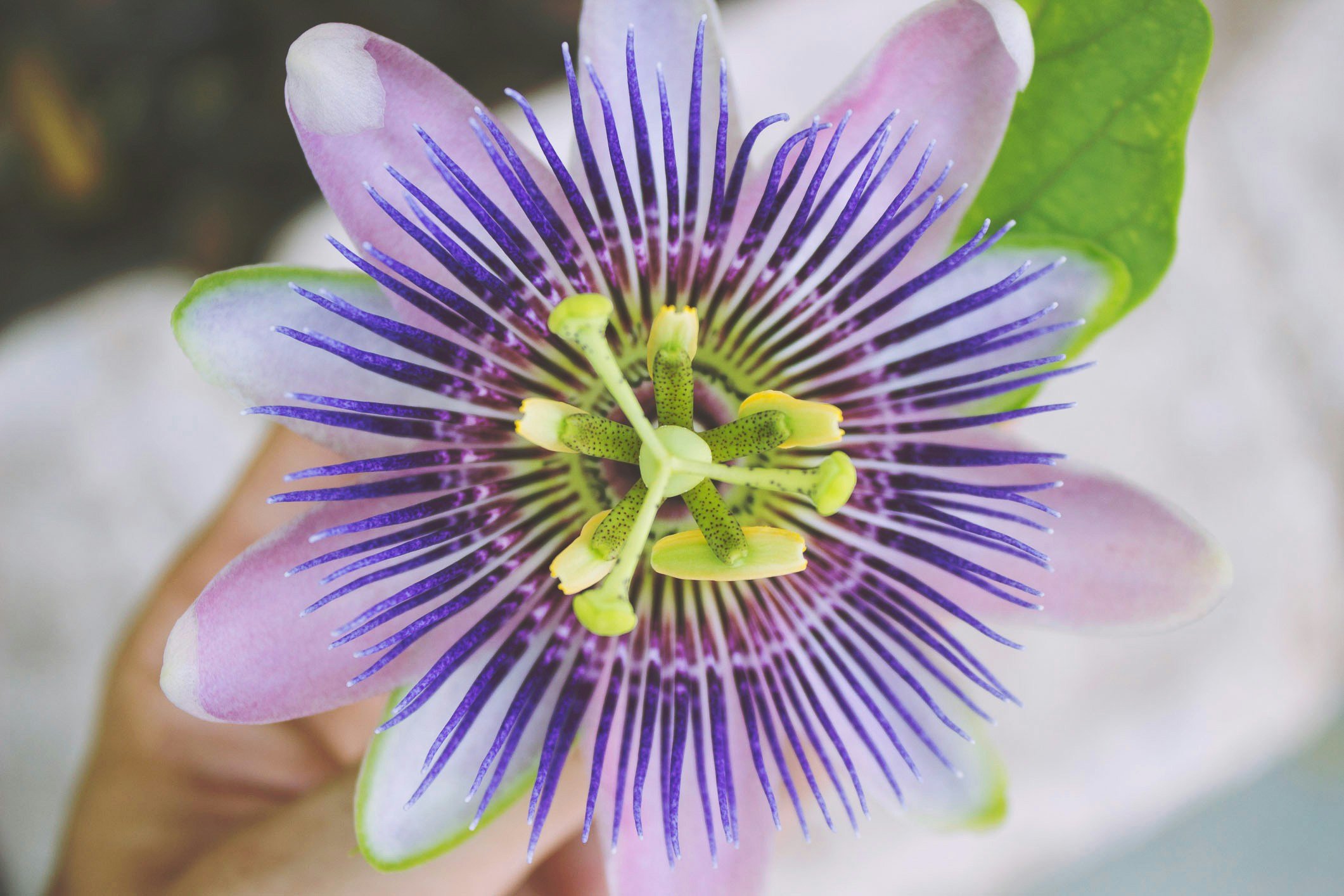
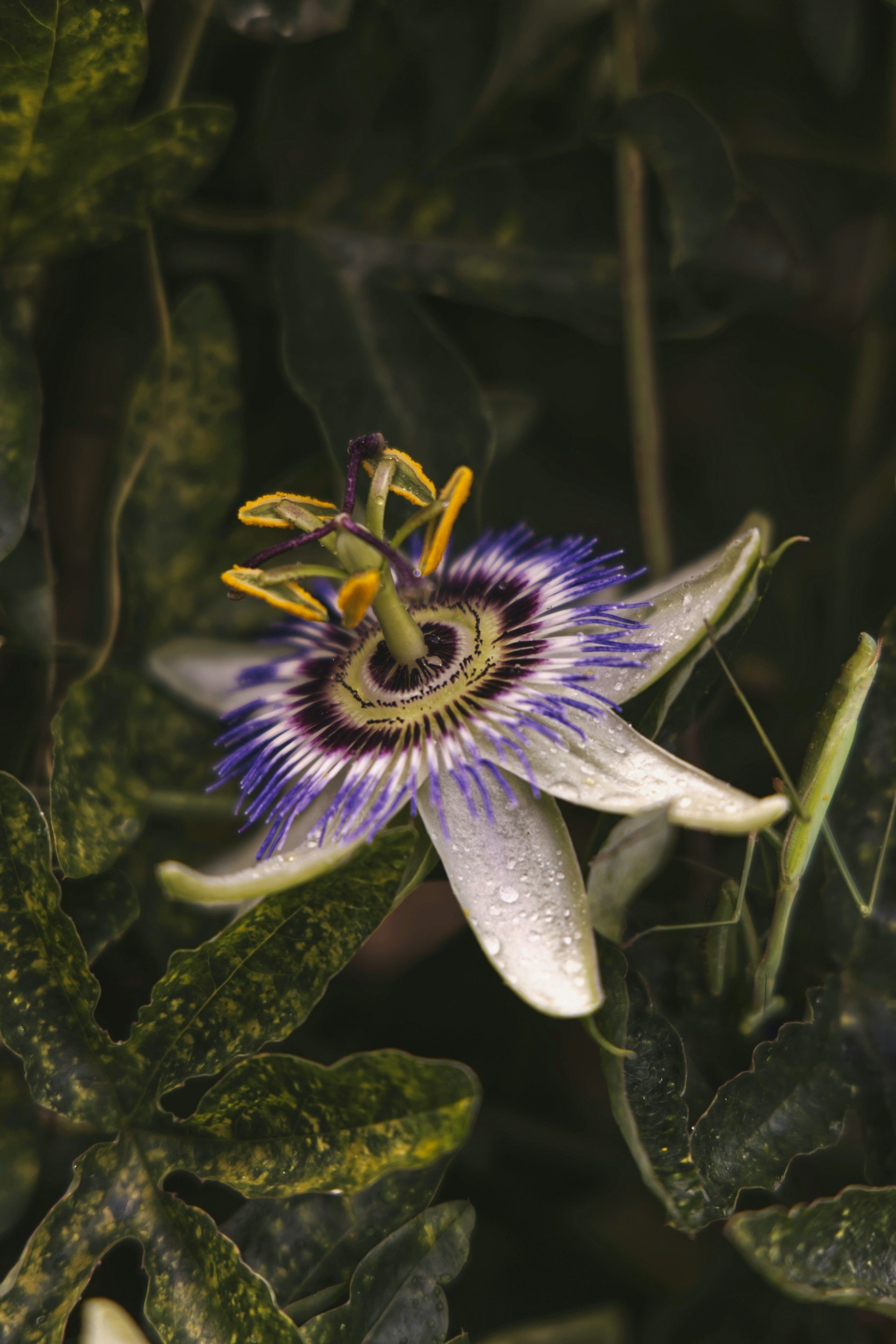
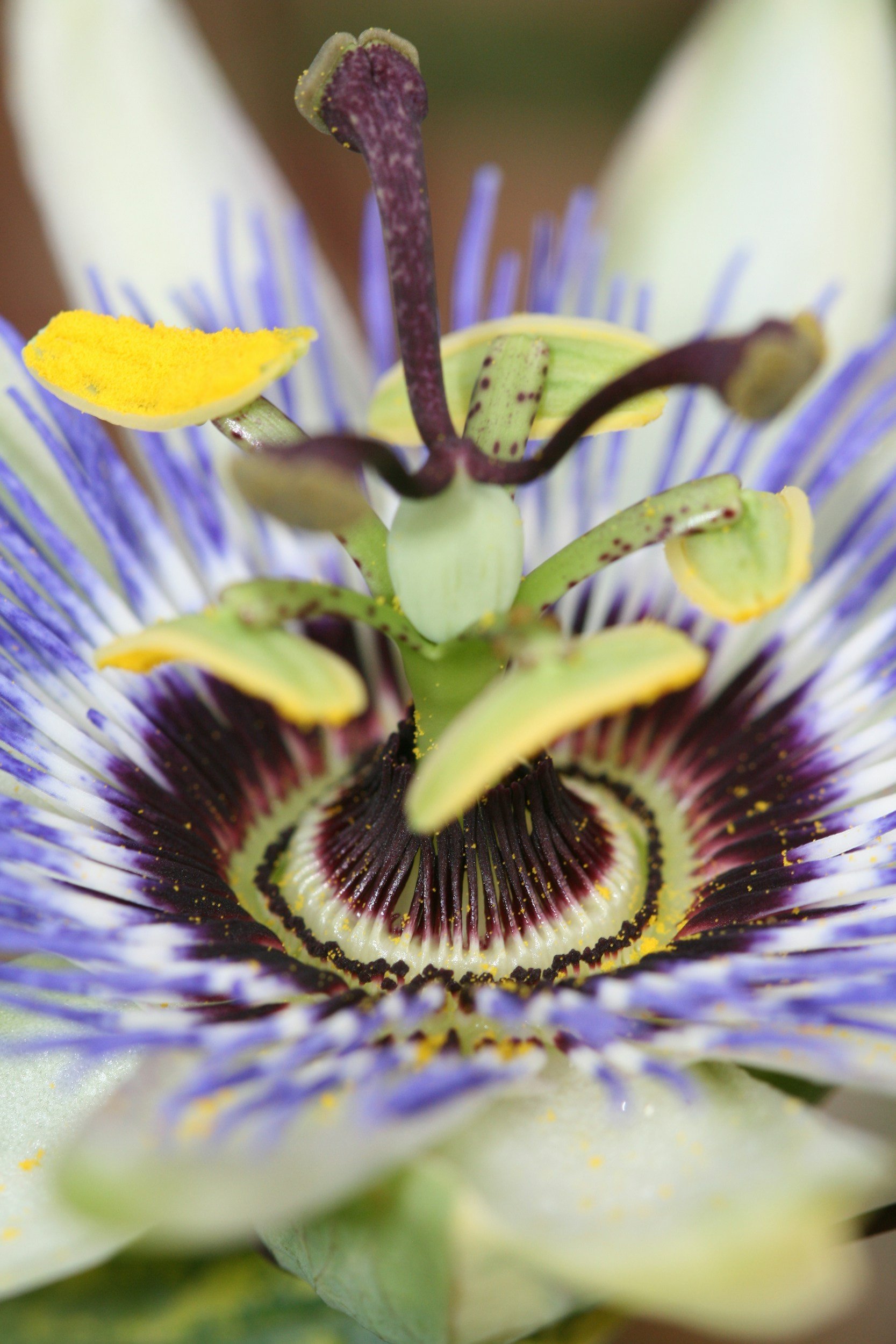
Sources
Bartram, T. (1998). Bartram’s Encyclopedia of Herbal Medicine. Constable.
Fisher, C. (2009). Materia Medica of Western Herbs, (2018 edition). Finchley Road, London. Aeon Books.
Hedley, C & Shaw, N. (2020). A herbal book of making and taking. Finchley Road, London. Aeon Books.
Hoffmann, D. (2003). Medical Herbalism: The Science and Practice of Herbal Medicine. Healing Arts Press.
McIntyre, A. (2019). The complete herbal tutor, revised and expanded edition. Finchley Road, London. Aeon Books.
Plants of the World Online | Kew Science. (n.d.). Plants of the World Online. https://powo.science.kew.org/
Disclaimer: This page is for educational purposes only. Consult a qualified medical herbalist before using herbs, especially during pregnancy, when trying to conceive, while breastfeeding, for medical conditions, or with children.
Read the full disclaimer → Medical Disclaimer.





